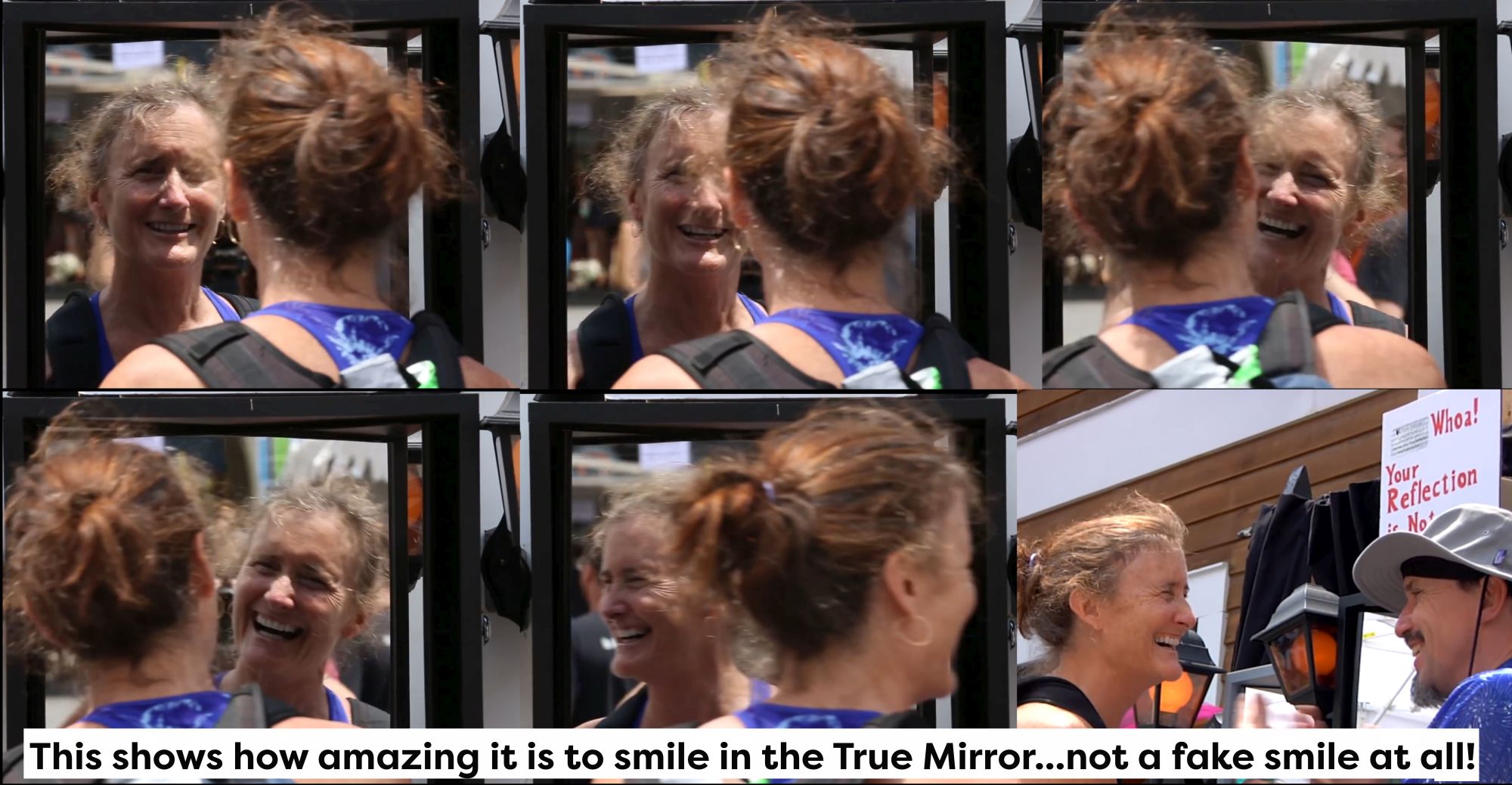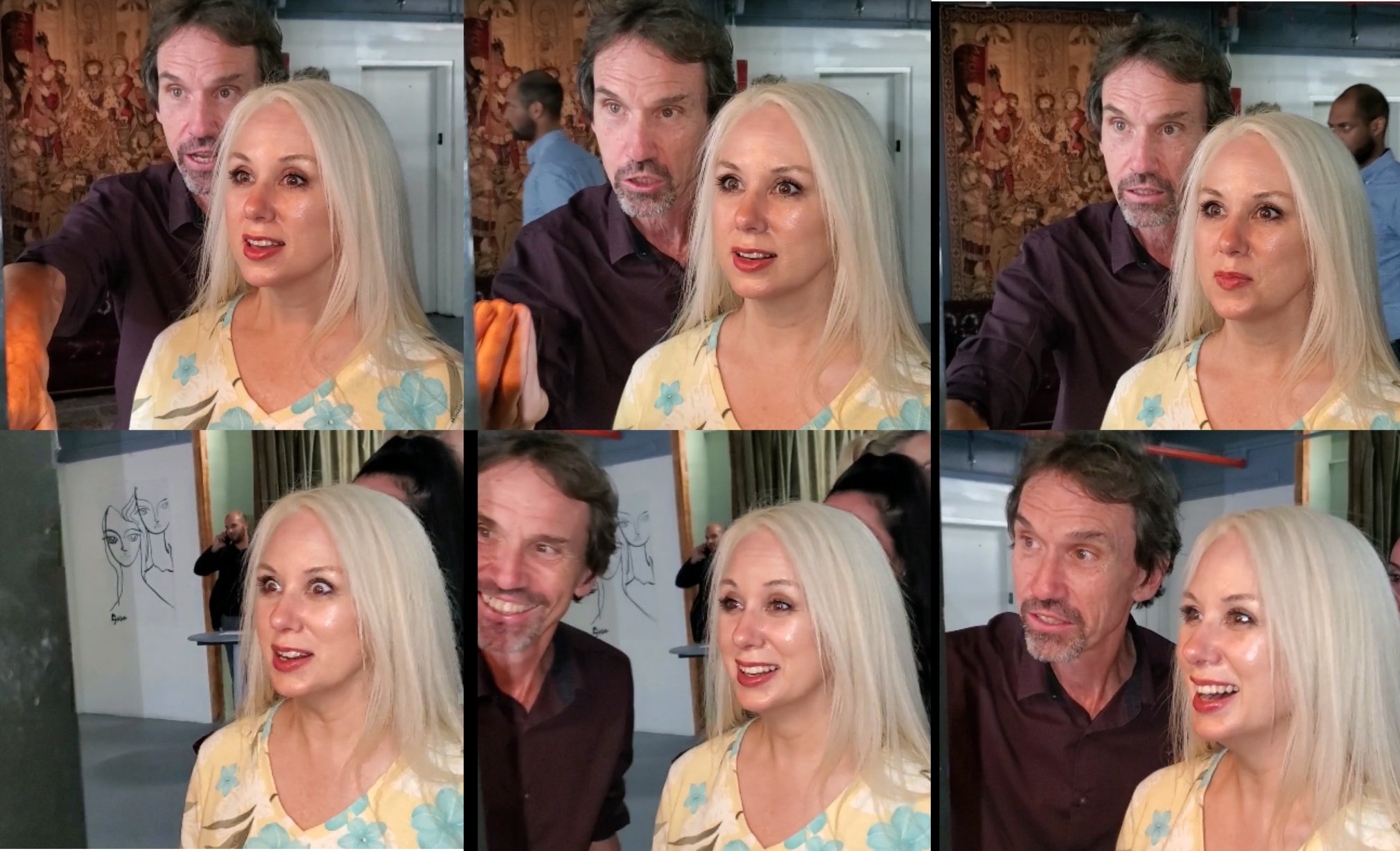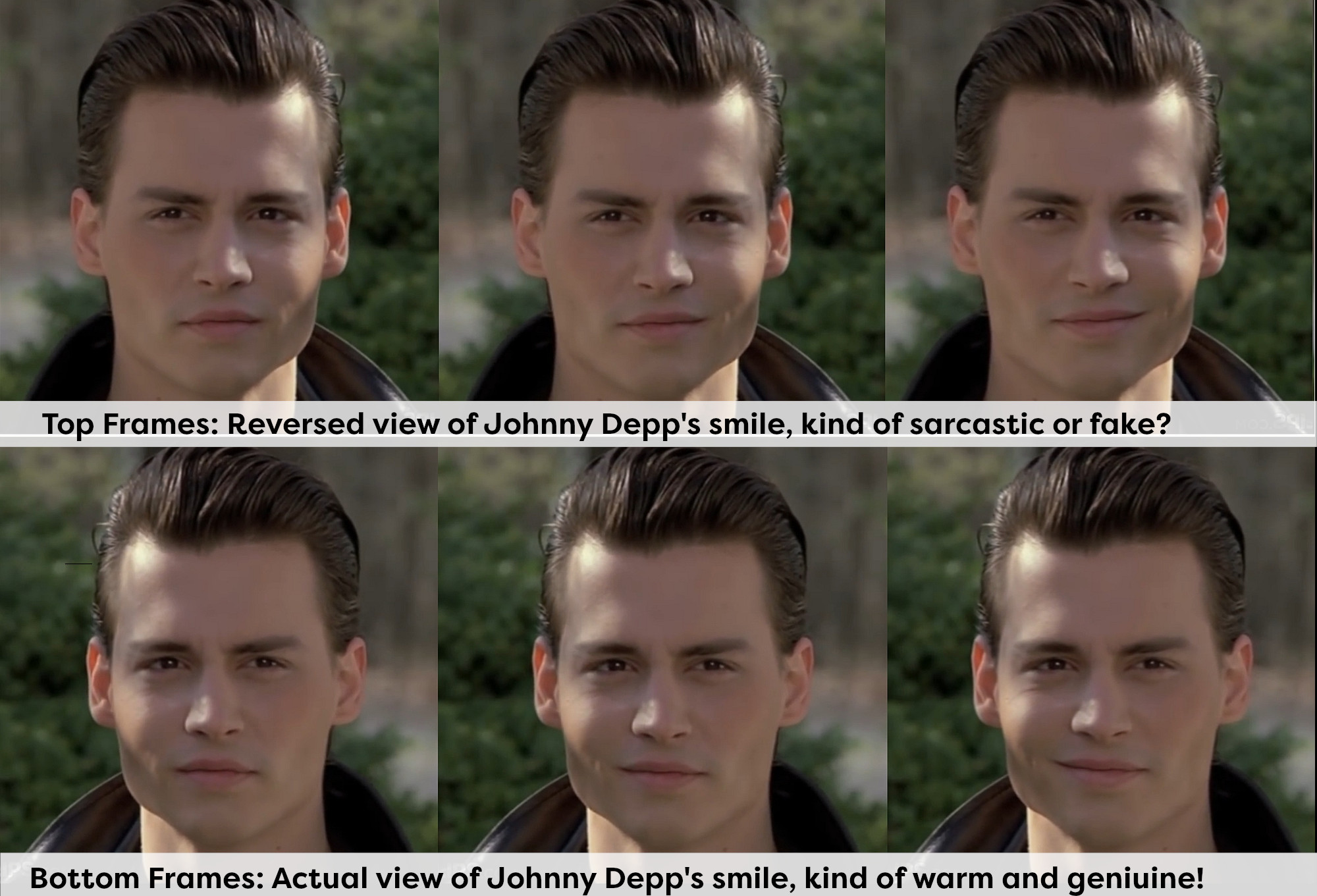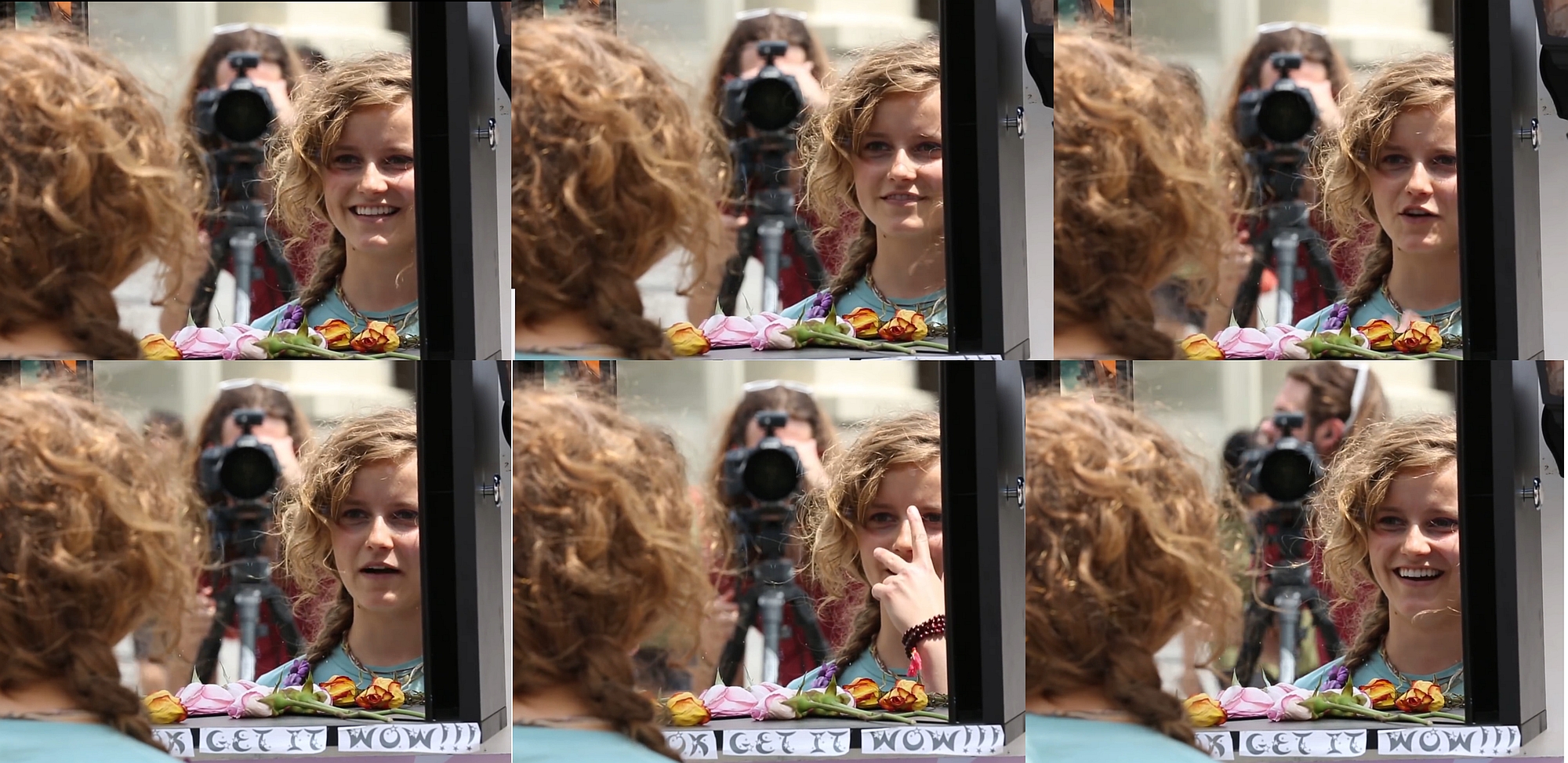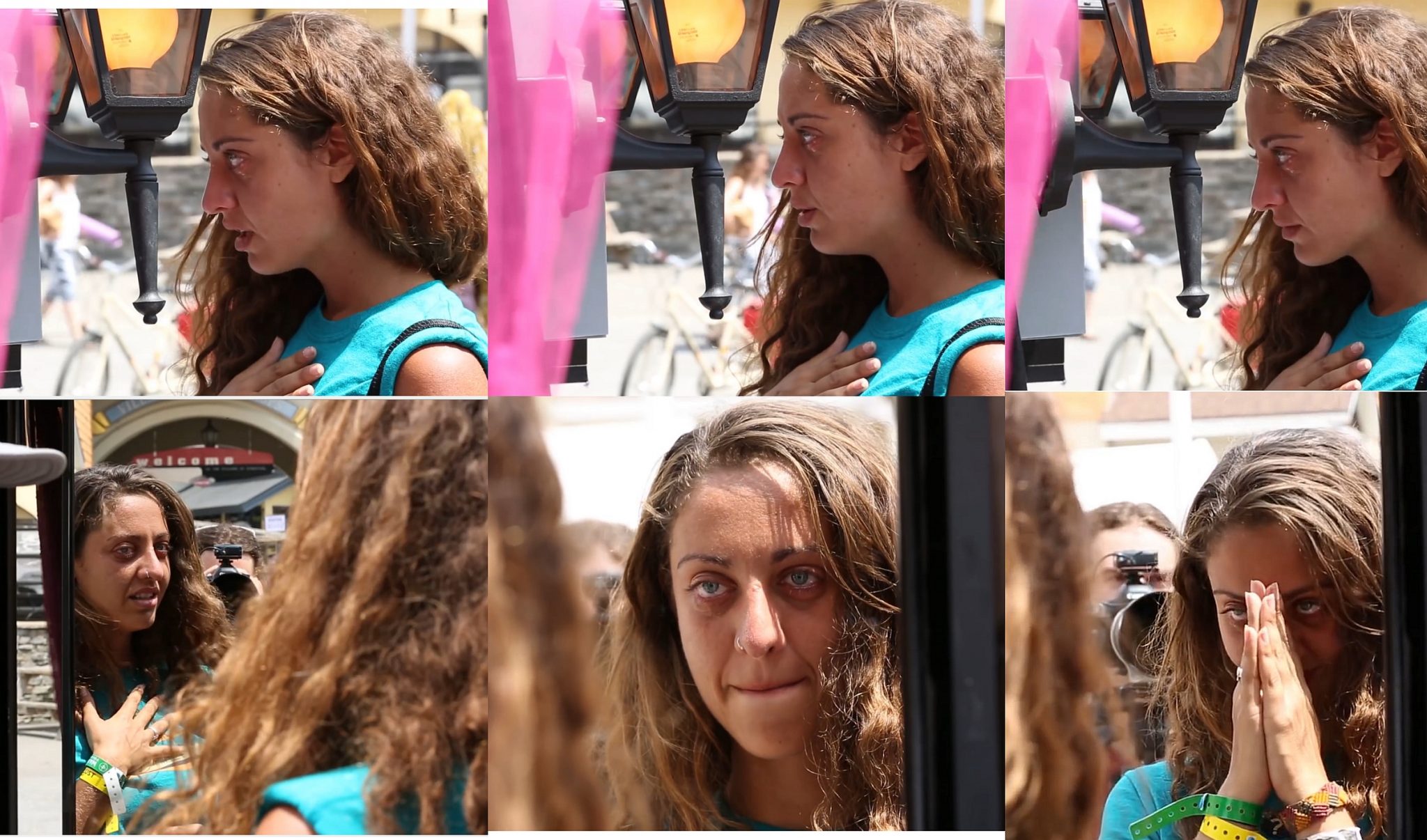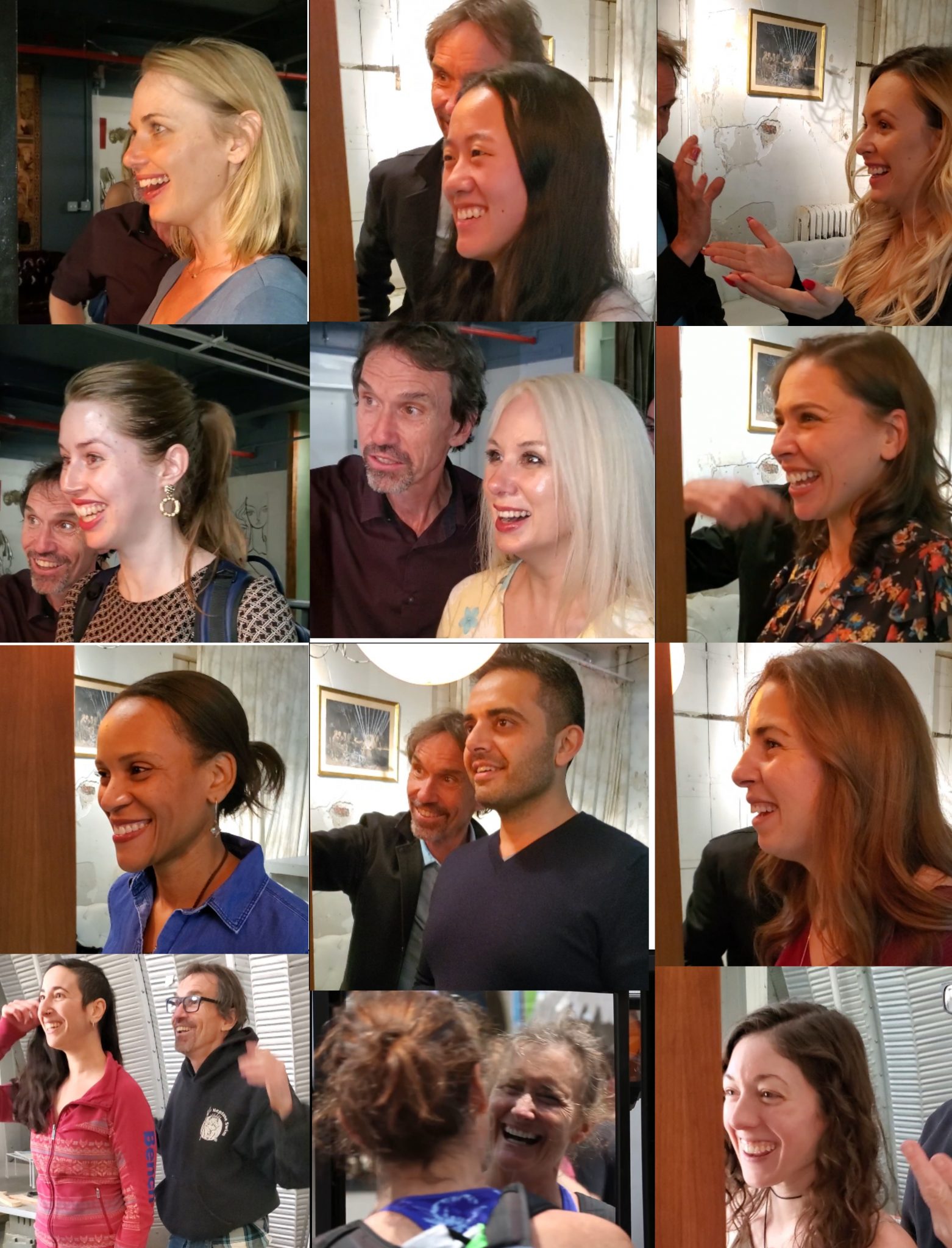A Radical New Way to View Oneself
Chapter 1:
This is the short story of True Mirrors, how something as simple as two mirrors together at right angles has created a brand new way to see ourselves, creating an intriguing set of questions for how and where it can be beneficial.
The idea idea for a non-reversing mirror is at least 2000 years old, where a Hero of Alexander described it in 1CE (Mark Pendergrast found it while researching in his excellent Mirror Mirror book.)
And in 1887, a Reverend John Hooker patented the idea, and presumably sold some. But he didn’t really have the materials or probably the market for it back then to have made much of an impact.
Nowadays, the first surface mirror you need to create a perfectly invisible seam is commercially available. Along with a number of design elements and tricks, an optically correct non-reversing mirror is now available. It is what makes a True Mirror(r) so special.
The real story of True Mirror isn’t just about getting the optics right, but what happens when we make eye contact with ourselves. There is a distinctly more animated version of us present, one whose eyes and faces communicate as they do with everyone else.
It directly challenges what happens when we make eye contact in traditional mirror, where within seconds faces simply settle to a more static version that lacks as much communication.
Its a cool party trick – its easy and so much fun to show the difference to lots of people…there’s even some videos at www.instagram.com/truemirrorco
But its so much more than a party trick, because the backwards mirror reflection has been with us since childhood, ever present, unchallenged and solitary. We are the only ones who know ourselves in this reversed manner.
If the new intel provided by the True Mirror experience is saying that the mirror version is not fully us, what does that mean?
That’s the real story…
More coming
John H. Walter
Feb 2020
THE STORY OF TRUE MIRRORS
A Radical New Way to View Oneself
Chapter 2: John Walter’s discovery
Even though the idea for non-reversing mirrors has been in the public domain since 1887, there has never been any mention in the literature about how we communicate with ourselves in this new reflection. Turns out it can be wildly different, especially in our most expressive moments.
Our faces simply work better to communicate who and how we are in the moment. The messages of what we are saying within our expressions look and read the way they do to everyone else. And just like regular mirrors, we respond and re-respond to our faces in real time, but for once, our responses can be more normal because our expressions stay intact.
It’s a radical new idea, one that came to John quite by surprise, when he first saw himself in a double mirror reflection. He was at a beach party, a few sheets to the wind, which mattered actually, when he walked into the bathroom and started heavily criticizing himself in the mirror. Yet again.
Primarily critical about looking and feeling fake, especially with a giant fake smile on his face. Eyes that looked manic and strained. This was not a new thing for him, but was particularly strong and critical at that moment.
Like most, he believed what was seeing was really him, and that he must have been fooling all those people out at the party. Wearing a mask that hides such inauthenticity. A lot of self-inflicted trauma for him, something that is likely true for many others in the mirror.
He threw his hands up in disgust, then turned to use the toilet, when he suddenly saw himself in a non-reversing mirror formed from two mirrors in the corner. He literally did a double take when his eyes made contact: Out popped “Oh There you are!”, followed with a “So what you’re xxx, you’re having a good time!” And then he started beaming at himself, non-stop for about 5 minutes!
His smile, which in the mirror had just looked so fake, and with eyes so manic, suddenly looked happy and genuine! The sparkling light in his eyes, looked and felt right, conveying how happy he was to be having such social success at 22. There was nothing wrong with him, and for the first time, his reflection was agreeing.
To test, he looked back to the flat mirror, and immediately heard, saw and felt the same message in his eyes – critical, confused and sad. But then back to the corner mirror and Pop! His smile jumped to high wattage! It got bigger instead of fading.
“It was like taking a shower, and years of crud just washed right off of me.”
So that was the genesis of this idea, and perhaps having that extra help from the party was what it took to open the door to this new way of viewing oneself. Now, it’s all about communication, what can we say to ourselves when we are really there talking back?
Next chapter: Showing others their True Reflection
John Walter
Feb 2020
full video: https://www.instagram.com/p/B4_gvl9Bcj4/
THE STORY OF TRUE MIRRORS
A Radical New Way to View Oneself
Chapter 3: Sharing the experience
After the rather ground-shaking experience of seeing himself in this new, non-reversed way, John immediately tried to show other people. Surprisingly, no one seemed to know what he was talking about! In fact, it took years and years of trying to explain it in words that people could understand. It’s still a work in progress, because people are so different in their response to their own True Image. It also depended on the optics getting correct, which is partially why these mirrors never caught on before – if it’s not perfect, it’s hard to use it.
But regardless of optics, some people love it, some people hate it, some people won’t look, and some people see no difference whatsoever! Some see themselves as wildly crooked and asymmetric, some are spooked by the unfamiliarity, and yet some embrace it wholeheartedly and burst into tears of joy.
One of the funniest comments from an artist: “You Frightened Me! Thank you!” But more to the core reason for why True Mirrors were created is this comment: “When did I become the capable bright soul that this mirror shows?” There are so many more wonderful comments website with great insights people have shared.
It was and continues to be an incredible experience showing this to people. By one count, since 1992, John figures he has had it in front of more than 30,000 people, often with one on one conversations about what they were seeing.
For best effect, he realized one key important setup was required when looking: ”You have to be yourself to see yourself”. Our pattern of looking in mirrors has been locked in since childhood, and as per the theory, that backwards face is much less expressive than real life. So when people look in mirrors almost everyone settles into a generalized stare. If you use that same expressionless face, you can’t see the point of a true mirror, and usually it just looks weird and crooked.
Getting people to smile did the trick. Not a fake or posed smile, but one with the glint and sparkle in the eyes. It makes all the uncomfortableness worth it, because it’s usually our best expression and it means a lot. Everyone has it, a genuine smile that also actually says something when we communicate with it. It’s visible and complete with all the charm, and it doesn’t go away like regular mirrors.
So that became the doorway for people’s aha moment, because once they saw the light of their smile, seeing the light of their comprehension right afterwards makes it even more amazing. It’s also why after 25 years, Mr. Walter will never stop turning people on to themselves –it’s too much fun!
The real trick though is to translate this from a nifty party trick to something that has real benefits to our internal well-being
Next Chapter: The Theory of True Mirror Communication
John Walter
full video behind the pictures: https://youtu.be/g5TfHddbtPA
THE STORY OF TRUE MIRRORS
A Radical New Way to View Oneself
Chapter 4: The Theory of True Mirror Communication
Why should one’s reflection in a non-reversed mirror create a such a better way to communicate with oneself? What is it about the traditional reversing mirror that makes it difficult to see and interact naturally with yourself?
The answer appears to be related to the differences in our right and left sides, how our faces portray different messages, probably due to the way our brains are operating when we express ourselves.
The shorthand for brain functioning is right is more feeling, left is more logic. This oversimplifies things tremendously, and while the real scientists who study brain hemispheres get really mad when it is used this way, it still can be very illustrative.
Regardless of the exact definitions, what is true that when you have a real expression on your face, the left and right sides are different, and that the message of the expression changes when you flip it.
With with more than a few examples, it can be seen that the right eye is more feeling, the left is more logic. See the attached picture which shows Johnny Depp creating a classic sweet smile (bottom row) from Cry Baby, and how it just doesn’t look so sweet when its flipped (top row). Look especially at the bottom right picture, and see how so much more feeling is in the right eye. When you flip it, that feeling just doesn’t read the same, and instead of being sweet, the smile is more sarcastic. The full video clip is at https://www.youtube.com/watch?v=6_nHubnKxqg
The idea is simple – when we look in a mirror, the information that is within our expression gets altered to something different than what is real, which makes our interaction different with ourselves. So Johnny Depp wouldn’t see sweetness in his smile, he would see sarcasm or maybe even pain…its easy to see how his response just wouldn’t be the same as ours. Our minds are interacting in a mirror as fast as our brains operate, but we are in a feedback loop with an altered version of ourselves.
Over a lifetime, starting when we are probably 8 -10, we form a pattern of looking at ourselves with a much reduced set of expressions, yet believe what we are seeing is real. Unfortunately, much of the expressions with light and life go away a whole lot quicker than those that are more serious and self-critical. Not sure why, but its true – your smile looks and feels flat in a mirror, but frowns look just as frowny.
The magic of the True Mirror is that Johnny Depp could see that sweet smile just as it is, with the same message behind it, and easily smile back. Even if you aren’t as talented and good looking as he, the mechanism is the same. In the True Mirror, it’s really You looking back. With your real smile, it can be such a good reflection!
Next Chapter: The Uncanny Valley of the True Mirror
John Walter
Feb 2020
THE STORY OF TRUE MIRRORS
A Radical New Way to View Oneself
Chapter 5: The Uncanny Valley of the True Mirror Experience
The biggest surprise of showing others the True Mirror was to find out that so many, more than half(!), immediately disliked what they saw in the True Mirror. One big reason is the “Wow that creeps me out!” (The other big reason is “Yikes, I’m so crooked!”, but that’s the next chapter)
It helped a lot if they heard that there was something special going on, which got them to relax a little and see beyond their initial responses. But even still, it was remarkable how many people still walked away saying “that was weird, I don’t like it!”
In 1970, Masahiro Mori, a roboticist, coined the term “Uncanny Valley” to describe how the more realistic a robot becomes, the more we like them, until a point where they are too realistic, but still not real, and all of a sudden we find them creepy. This article is a good overview of the subject: https://spectrum.ieee.org/…/huma…/what-is-the-uncanny-valley
When it comes to the True Mirror, it’s a new twist on this concept: We see ourselves in a way that is so similar physically to what we have seen our whole lives, but it’s different in a bunch of ways, including our sense of our very selves. Funny though, it’s kind of the opposite of the robot experience, where we are used to a “robot” version of us in the mirror, and all of a sudden we are seeing the “real” us that actually expresses with real expressions. In real time and over time. For sure, it’s an uncanny, weird feeling, and a lot of people find themselves in a place of not knowing what to do with it. It’s easy to walk away and say, “Let me go back to what I’m used to”
But it’s more likely that we don’t like it mainly because it’s unfamiliar, we just aren’t used to ourselves this way, especially when we are in action. Plus, for sure, when we express, our faces turn very asymmetrical and look very different! In mirrors, most people’s face are more symmetric because they aren’t expressing!
Yet, crazy enough, it’s the way everyone else has been seeing us. Not just what we look like, but how we act, and what do our faces express when we look at each other. In real time and over time.
It may be creepy at first, but it’s worth normalizing, because there are benefits to be gained. The theory is that at your core, you are OK, and being able to see and experience your OKness is worth the effort. Turns out, it’s super difficult to do that in regular mirrors. We need our faces working to see that we are OK. Who knew?
The point is, yes it’s uncanny, and probably very crooked (a perception issue covered next chapter), and yes, you might find yourself in a deep uncanny valley about it.
But on the other side of the valley is actually the normal version of you, the one that expresses, emotes, comes across, non-verbally communicates, smiles(!), etc. just as what is real, and the mirror version is seen to be the odd thing.
Imagine if the tables were flipped, and you only knew your true image face and then saw your backwards face for the first time…for sure, you would be weirded out!
Bottom line and benefits:
Cross the valley, get used to it, and understand yourself better at the other end.
Be yourself to see yourself. See what you are like when active! If your are in front of a True Mirror don’t just stare.
Sync the inner view of yourself with the way you actually exist and are viewed by others.
Experience the regular mirror still, but learn about the filters it is creating and work to get past them.
Discover some beliefs about yourself only exist in the mirror (more on that!)
Enhance your knowledge of how you communicate for more personal and professional success. Know thyself!
And at the end of the day, look for your self-love within the True Mirror; it’s there and very good to see.
John Walter
Feb 2020
Video stills from https://www.youtube.com/watch?v=2Lyc6DJ69To © Circus Picnic 2015
Note: if you watch the video, notice how much the viewers faces stayed animated in the True Mirror. But usually there’s a moment of “wha?”
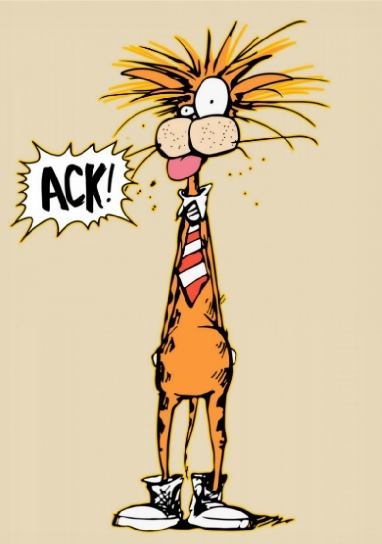
THE STORY OF TRUE MIRRORS
A Radical New Way to View Oneself
Chapter 6 : Ack! I’m Crooked!
So many people feel totally asymmetric and out of balance when they look in the True Mirror. It’s not a pretty sight, and has led many to run away and never want to come back.
It feels almost like a “Picasso Skew”, where the face feels stretched in different directions and things just don’t line up. Things look bigger or smaller, higher or lower, tilted and crooked…
This skewing and high asymmetries come from a perception issue, not reality. A number of factors are at play, and almost all of them can be improved with by simply getting used to the new view. Just like the Uncanny Valley, this strangeness is worth normalizing because there are benefits to be had on the other side.
Here’s a few things that may be happening to a typical first time viewer:
1) Their face probably is asymmetric, but only to the degree that they can see it in the backwards mirror. Their perception backwards will likely match others perception forwards of the same face.
2) But upon looking for the first time in the True Mirror, features don’t match or line up as expected. Differences stick out!
3) If there is a clear asymmetry, such as the nose tilting 1 degree to one side, it’s usually so small that no one sees it. In the True Mirror, it appears tilted 1 degree in the other direction, which is 2 degrees from what they thought was straight!
4) Skewing comes from tilting our heads, which we all do, even slightly. In a mirror, the eyes line up no matter which way the tilt goes. In the True Mirror, now the eyes are tilting in the other direction, and chances are the dominant eye looks where it’s supposed to be, but the other side of the face is skewed much higher or lower. Ack!
5) Then there is the 3D aspect. It’s subtle but it’s real…the image is more 3D in the True Mirror, whereas images are generally flattened in a mirror. There may be more depth asymmetry seen for the first time, especially if the head tilts sideways (front and back) a little.
6) But the final reason, and the one that makes getting used to it matter, is everyone’s face become much more asymmetric when they are actually using it to communicate. By measuring all the face’s features, frame by frame in a video, it’s easy to see features completely bounce around as the person says something. And that’s the key – real communication uses that asymmetry to communicate. Tons of non-verbal, intentional and emotional communication is sent out constantly by our active faces, and they are generally read well by others…we are pretty good at understanding each other.
That brand new asymmetry of expressions is something not present in flat mirrors, where most expressions become much more static within seconds. Getting used to the way the face actually operates, what it is saying, especially to oneself…there’s real value available directly related to self- understanding and growth.
Bottom line? When we are genuinely being and expressing ourselves, we show up to the world; it’s what people who like and love us, like and love about us, asymmetries and all!
John Walter
Feb 2020
THE STORY OF TRUE MIRRORS
A Radical New Way to View Oneself
Chapter 7: Mirror Work in the True Mirror
“Mirror Work” describes a process where one looks into one’s own eyes for a long time, with the idea of enabling deep, long and meaningful interactions. On the other side of this work can be a much healthier individual, where more self-knowledge and awareness brings many good things.
Louise Hay, who developed this practice, has a great introduction to the concept on her webpage at https://www.louisehay.com/what-is-mirror-work/
“Most of us, when we look into a mirror, we criticize ourselves, make fun of ourselves, say derogatory things to ourselves…it’s a habit,” she says. “The more you use mirrors for complimenting yourself, approving of yourself, and supporting yourself during difficult times, the deeper and more enjoyable your relationship with yourself will become.”
But it’s notoriously hard. Teal Swan, an online spiritual teacher, has a podcast where she does Mirror Work right in front of you, admitting right away how awkward it is to look at oneself this way. And she says it not for the faint of heart, because there are so many layers and walls between who you think you are, who you really are, and what you are seeing in the mirror.
But what if the reversal of left and right in mirrors makes our faces not work properly? What if Mirror Work was hard only because we didn’t have the full range of our emotions visible? That our faces, which communicate so deeply normally, have turned into masks, causing us to struggle to understand ourselves? What if many walls and layers are just the consequences of the reversal, not something that actually exists in your true nature?
Is Mirror Work really that hard, or is it just because the interface is not correct?
If you watch Teal Swan on that mirror podcast, you will see a lot of staring as she takes on mirror work for her podcast. A quick analysis shows that she is staring more than 85 percent of the time, with the remainder with a highly constrained set of expression, and even as she describes seeing pretty unlikable things about herself.
This particular clip starts minute 8:30, where she talks about the wall she is confronting.
https://www.youtube.com/watch?v=8eHVH3iuRig&t=520
Her stare continues, even as she talks about going through some crazy perceptions. Even as she says her face is morphing into ugliness, or a grotesque face. Or not belonging, or numbness, or a void, or seeing pain and a living hell. Or being damaged.
Her eyes don’t change even the tiniest bit as she is describing these awful things. Even when she affirms the positive: “you are not who people have taught you who you are”,”the way you see yourself is not accurate” “the truth is, you are much more beautiful than you have been led to believe.”
It’s all said while staring, and then those positive affirmations are followed in less than 5 seconds with “now I’m being led to grief – and endless ocean”. Again, no change in her eyes. Eventually she gets to a place of acceptance, but there’s still no change in her eyes, no real experience of self-love and healing that you can see.
This is why most people don’t want to do Mirror Work. It’s a long process of staring at yourself and trying to understand and process what you are seeing. But it’s like working on a car engine with the hood closed. Our expressions are the true window to our soul, they need to be actually showing this, not masked off.
This becomes abundantly clear when doing Mirror Work while looking in a True Mirror. At a filming at Wanderlust Yoga festival in 2015 there was a woman who did some serious work with herself, and it was both really sad and really beautiful. Like many first time viewers, she really didn’t like what she saw, but worked really hard to understand herself by talking through it. You can see really strong, raw emotion being expressed, moment to moment, as she stays in her experience. https://www.youtube.com/watch?v=2Lyc6DJ69To&t=106
The point is, at the end of her 10 minute mirror work, she did some amazing processing of who she was seeing and who she felt she was, and her face (which she was upset about), continued to be expressive. Towards the end, her true beauty really does show up. It’s so much easier to love the person looking back from the True Mirror. When you see the love for yourself, from yourself, as expressed through the eyes…that’s where real healing can happen, This is the point of Mirror Work, not to journey through a strange landscape of weirdness that Teal describes so well, but to uncover and experience the natural beauty and vibrancy that you do actually bring to life.
It’s why Mr. Walter has been promoting and building True Mirror since 1992: He saw how easy it was to communicate with himself, his “real” self, and at the end of any viewing, from 5 seconds to 5 minutes, it always felt better. The same masked version of him is still visible to him any time he makes eye contact in the backwards mirror, and feels like another person looking back.
For him, the backwards mirror version still has layers and walls, but now there is no need to try and best them. In the True Mirror, they simply aren’t there, or if they are, they are real and they *should* be working on! By getting the interface right, Mirror Work becomes normalized, like speaking to your best friend.
John Walter
March 2020
Full Videos:
https://www.youtube.com/watch?v=2Lyc6DJ69To
© Circus Picnic at Wanderlust 2015
https://www.youtube.com/watch?v=8eHVH3iuRig
Teal Swan https://tealswan.com/
THE STORY OF TRUE MIRRORS
A Radical New Way to View Oneself
Chapter 7,Part 2: Mirror Work…the easier kind
In the previous section, we talked about the concept of Mirror Work, where one spends an extended time looking and processing what is seen in a mirror. It’s notoriously hard, and most people shy away from such a confrontive experience. There are benefits, but it appears there is a long and difficult path to get there.
But what if Mirror Work was hard because the interface is incorrect? What if it was a lot easier if our natural faces were present and functioning when doing this deep work?
We think that is the case within the True Mirror reflection. With the simple placement of right on right, and left on left, expressions mean what they say and say what they mean. Backwards, the messaging gets altered, in real time, to something that simply isn’t natural, causing our responses to likewise be not natural. A mirror stare appears within 5 seconds of almost anyone who looks in mirrors, vs the vital, animated and expressive person that we usually are to the world.
Many people discover how different, and more pleasing, their faces are when truly animated, as is shown in many videos on the True Mirror video page. The video stills shown below are examples of people actually smiling, genuinely, to themselves in the True Mirror – it’s truly lovely!
So the mirror work here is about seeing is believing. If and when you can see yourself with light and life in your eyes, with your charm and smile and personality actively visible in real time, it becomes easier to believe these good things about ourselves. How hard is it to believe in these elements when they don’t show up in mirrors? Again, because we believe what we see, we have generally believed things about ourselves that are much less than what is true when looking in mirrors!
No wonder the concept of looking deeply in mirrors is such a difficult thing to consider. But what if it’s the interface that is wrong? What if there is nothing about us that we have to fix in the mirror, but just more about discovering and understanding what is really there?
In the previous section, we talked about someone working through difficult appearance issues within the true mirror, which was hard, but still productive. Just as likely though, is the response from the woman just before (starting at 1:30 ), who so liked what she saw, complete with her smile, that she walked away smiling like crazy!
To actually be able to see, and believe in, that kind of light in your own eyes…that’s some amazing, and *not hard* mirror work. It took only 2 or 3 minutes to see!
Seeing ourselves as real people goes a long way to reconciling and understanding who we are, who others see, and how we show up to the world, especially with the light in our eyes continuously present!
Could it also be that it’s just the mirror itself that has caused a separation problem to begin with? It is, after all, an experience that is with all of us, ubiquitous, unchallenged, solitary and inaccurate! We are the only ones who know ourselves through this mirrored interface, everyone else sees us with our expressions intact.
What would Mirror Work be like if the person in the mirror was more of an active, naturally communicating ally than a questioning, doubting, staring and life-draining doppelganger?
What would the result be other than truly more enlightened self-analysis and understanding? When the person looking back is the real you, how much more can you walk away with from any time you made eye contact, whether for 5 seconds or 5 minutes,?
This is what True Mirror is all about – giving people a chance to see and believe in what is real about themselves. At the same time, it also questions what is coming back from mirrors. We are so much more than what we give ourselves credit for.
The True Mirror gets you in sync between the inner and outer you, because there really is only one of you: The backwards mirror itself is a faulty interface that is the only place that another version of you exists.
John Walter
March 2020

A Radical New Way to View Oneself
Chapter 8: True Mirrors and the Mainstream? NOT!!!
If True Mirrors are so good, why aren’t they everywhere?
Mr. Walter has been bringing this concept to the public since 1992, showing the mirror itself to more than 30,000 people, featured in more than 70 major media spots, installed in more than 30 museums, and sold more than 5000 True Mirrors into 40 countries.
More than half of the people he has shown it to have seen dramatic, and oftentimes positive differences between the mirror and the True Mirror.
But to his surprise, the concept never has caught on, never mind becoming remotely mainstream. As a theory and product with wide ramifications for human experiences, the response from a wide range of related fields has been almost universal…nothing.
• No retailer carries it, it never sells itself anytime it has appeared.
• No one from a dozen possible fields of psychological research has explored the concept as it relates to their field. No outreach ever finds interested ears.
• No educator has considered adding it to their curriculum
• No Parent see this as a tool for their child to grow up with.
• No beauty salons or clothing stores will install it for better experiences
• No investors have shown interest in anything personal about this, so they see no value.
• No marketing people have ever seen the vision of these becoming mainstream because of the personal
• No spiritual leader, therapist, life coach, social media influencer has explored and include this in their modalities
It has been very puzzling, regardless of so many positive experiences over the years, the growth rate has always been flat, never getting to the next level.
Is it a crazy idea or is it just about execution and/or being underfunded?
Is it just because Mr. Walter is a mad scientist and not a good entrepreneur, social networker, followup-er? Personal resistance? Clearly that is a big part of the picture.
But it’s more likely that there is a deep, deep resistance to what True Mirror creates: an Uncanny Valley that is difficult for people to cross, where there is a new and different version of them looking back, one who they will have to learn about, perhaps not hide so easily. It’s a big step to be proposing here, apparently many are not ready to take it. Even though the belief is that on the other side of that valley is the normal version, and the mirror version is the uncanny one.
And of course, we look crooked to ourselves the first times we see ourselves true image. It’s a big exaggeration, (see the Aackk I’m crooked chapter), but seeing is perception, perception is reality. The only answer is to just get used to it and see past it…it does tend to go away as our perceptions shift. And as we express ourselves, our faces become even more asymmetric, but that is normal, that is how others see us.
So who knows exactly why it’s been such a sleeper. Why there is almost universal crickets from everyone except museums and the press? A big head scratcher for many years, one that still doesn’t have an answer. Always there is sense of “not yet”
But finally, at this point in the Story of True Mirror, the Tao teachings say let go, don’t control it, and let the idea flow into the mainstream the way it will, if it will.
Ultimately, the idea itself, the ability to actively talk to yourself in the True Mirror makes it an indispensable tool for dealing with and actually loving yourself, in all your nuance, over all your life. This ultimate reason for using a True Mirror becomes more and more valid the more you use it this way. It also makes you realize how poorly you talk to yourself in regular mirrors. We all do, we just don’t know it yet.
As the fabled, partially true, Hundredth Monkey story goes, once a number of people do it, all of a sudden everyone is doing it. Whether and when this will happen with True Mirror is up to the Universe. For now, Mr. Walter and his Muse will continue making True Mirrors, dreaming about them bringing more light and life into the world.
John Walter
March 2020
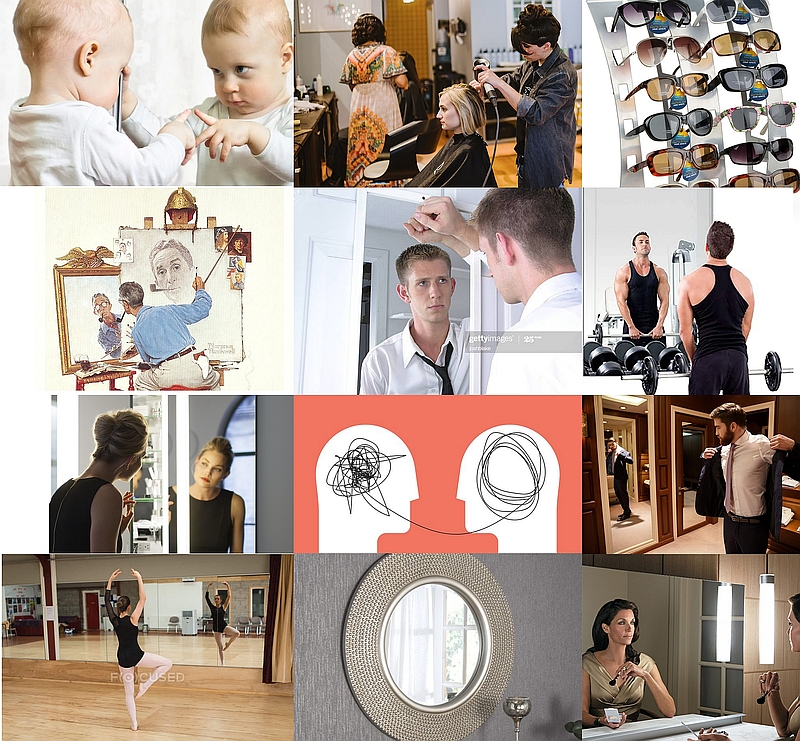
THE STORY OF TRUE MIRRORS
A Radical New Way to View Oneself
Chapter 9 Uses and Benefits
So what is a True Mirror good for? Figuring this out has turned out to be just as challenging as perfecting the optics. Over time, Walter identified more than 20 applications that are possible, but some are so brand new that the world still is not ready for them.
At the core is the profound idea that the person looking back from the True Mirror is an accurate representation, and in contrast, the person looking back from mirrors really is different from what is real. Close, yes, but it’s missing key elements of who we are, how we are, and how we express ourselves. It’s tends to be static, not animated, as we are in real life.
The science on this is not in yet, but these are the findings from sharing this experience with more than 30,000 people. While not everyone sees it, when they do, it is unmistakable – it’s really a true to life version looking back from the True Mirror!
As this is proven to be true, imagine the following uses, some which are already happening:
• Every individual can use it for more self-awareness, self-understanding, self-growth, clarity, intention, empathy, empowerment and so much more. It continues to contribute insights over a lifetime, in the moment, every moment.
• Early use in childhood would enable the child to develop in new, clear and exciting ways, some not even imagined now. Being connected with the full energy of childhood, and not shut down by mirrors at an early age – what would that be like?
• At the beauty salon, being able to converse naturally with your stylist and yourself in the True Mirror, seeing how your hair actually appears, and not having to stare at your backwards self for 45 minutes (have you ever noticed how shut down people are when getting styled?)
• At the store or at home, choosing your outfit to fit your visible personality and current mood. Seeing what look really works for you, and which looks you can really make work.
• (There’s also a nifty optics trick where if you put a backwards mirror behind you, and look into the True Mirror, you can see your back completely without twisting)
• Eye glass stores –again seeing how a pair of glasses accents your existing look and attitudes
• Artists doing the self-portrait study – by reflecting natural expressions in 3D, the results are remarkably more lifelike (#truemirrorselfportraits)
• In the case of recovering from trauma, the empathy and compassion that can come from the true mirror can be astonishing. It’s possible to fully and continuously cry out emotions without judgement and criticism
• In some ways, the mirror itself has traumatized all of us, we just don’t know it. There are likely many self-negating beliefs that we carry that are coming from our early and continual interactions with our doppelganger in the mirror. What have each of us said to ourselves in our formative years (or even just today?) that is counter to our true nature because we can’t see it in the mirror? Perhaps we can heal from regularly seeing our true reflection: what we actually do look like, how we actually do act, how others actually do see us?
• Dance and yoga studios – with a single True Mirror in a corner with extended width to 10 feet, the entire studio can see themselves in the same mirror, in 3D, with full posture feedback, grace, and even expressions. Energetically, the dance can be more animated, more personable, and a good practice for performing live. For yoga, the continuity of self would be beneficial as well as for form.
• Gyms – Possible to balance form more easily, since any asymmetry is immediately apparent. Also, there is exceptional definition and 3D being reflected. Plus, it’s not the doppelganger looking back it’s you, fierceness and all as you work out!
Turns out there’s even more places, like chiropractic and posture restoration, retail display, science museums and classes, and even as a decoration,
But at the end of the day, it’s really the personal aspects of the true reflection that is the story of True Mirrors. Its novelty and physical uses are interesting, but the effect on human consciousness can and will be profound.
We are the world’s premier intelligent species, and now for the first time, we can see what that looks like within ourselves. It’s almost exactly what the Bible was talking about:
For now we see through a glass, darkly, but then face to face. Now I know in part; but then shall I know, even as also I am known.
1 CORINTHIANS 13:12
Or more clearly (the Amplified Bible version):
For now [in this time of imperfection] we see in a mirror dimly [a blurred reflection, a riddle, an enigma], but then [when the time of perfection comes we will see reality] face to face. Now I know in part [just in fragments], but then I will know fully, just as I have been fully known [by God]
It’s all possible
John Walter
March 2020
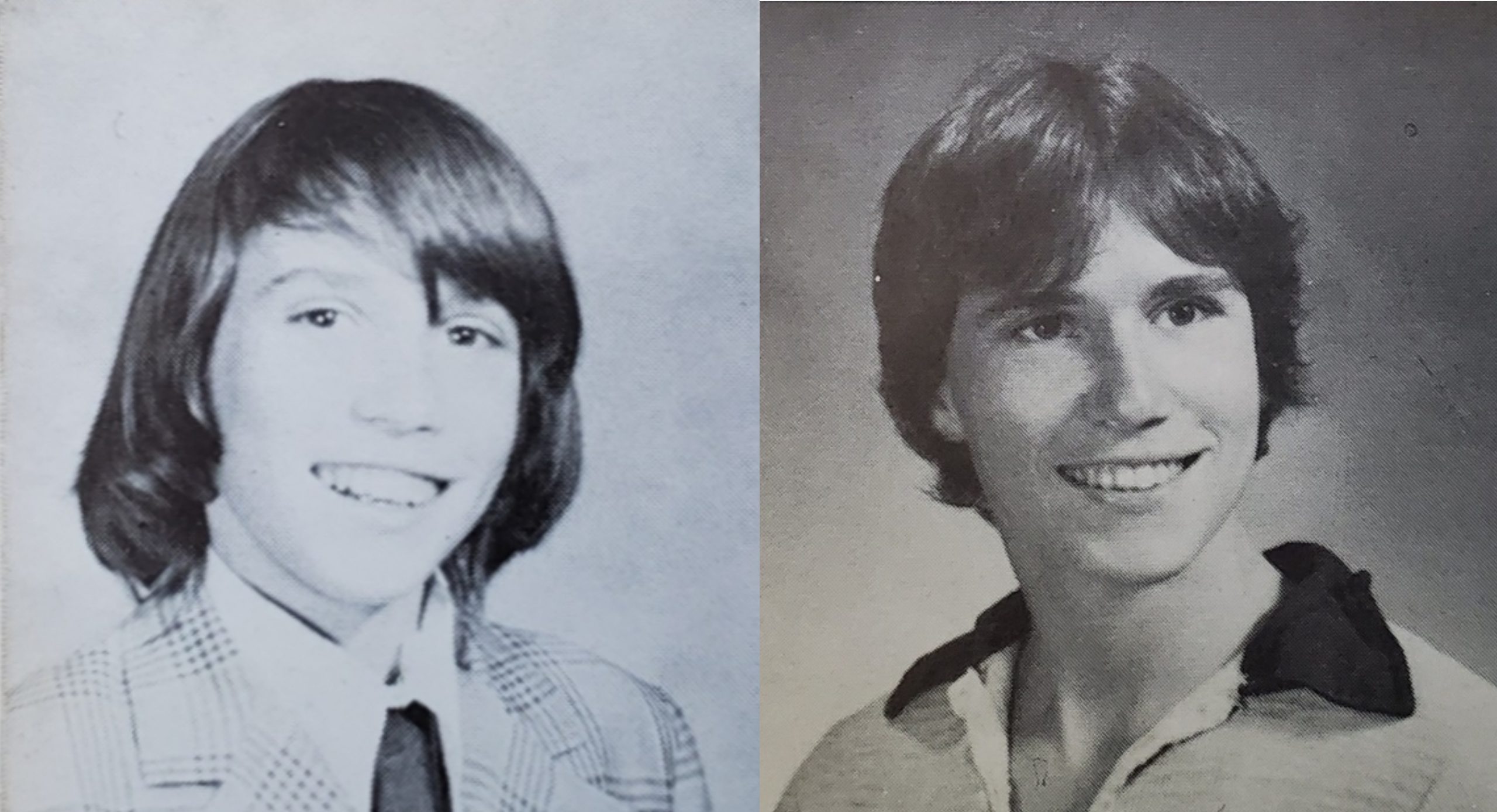
THE STORY OF TRUE MIRRORS
A Radical New Way to View Oneself
Chapter 10 The Hair Part Theory and True Mirrors
The True Mirror was such a big deal to John Walter because he literally changed his life after switching his hair part from right to left in 1979, when he was just 19, an experience that led to the strange but surprisingly accurate Hair Part Theory.
He was looking in the mirror and wondering once again why pictures always looked kind of weird, but that his mirror image always looked fine. Suddenly he realized that he was looking at a guy with a left part in the mirror, but was wearing a right part in real life. He switched it to the left. It looked funny now in the mirror, but he reasoned that it probably looked better in real life.
And so, he turned from the mirror and began testing his new look, and was stunned by how much better his social life became. It was like night and day, where before he was generally considered awkward and weird by most of his peers, suddenly he became popular. There were two groups as well – first the cool kids in his home town that summer, and then back at college that fall – there was a new kid in town!
It sounds kind of silly, but nothing changed except his hair part, along with a belief that the person he always liked in the mirror now was the person people saw. And that awkward person he used to be was now trapped in the mirror. Sure, positive thinking played a part, but the difference really was 100%. How was this possible?
Years later, in 1998, John Walter’s sister, anthropologist Catherine Walter wrote a paper about it, “What Is Your Hair Part Saying About You? The Effects of Hair Parting on Social Appraisal and Personal Development”, which explains it this way:
“The way a person parts their hair is related to many subconscious associations when assessed by others. Each hair part type initiates cycles of behavior toward, and response from, the individual. Over time, these cycles affect personality development, perpetuating a system of cumulative and interactional continuity. Parting the hair on the left or right initiates, in viewers of the individual, subconscious associations with the aspects of cognition generally ascribed to the same cranial hemisphere that is accented by the hair part (i.e. left part, left hemisphere). When there is a center part, no part or baldness, the subconscious associations are more balanced or neutral, with neither cranial hemisphere’s activities given more importance in the assessment.”
Generally what this says is that when your hair part is on the right, you are perceived as more right brained, when you part on the left, you are perceived more left-brained. Middle or no part is more balanced. The generalizations ascribed to either side are obviously much more nuanced in reality, but the truth seems to hold that men with right hair parts are almost always perceived as somewhat atypical among men, a strong characteristic of the mysterious right brain. For John, when he switched to the left side, the accent on the atypical coming from the right part literally disappeared and he became more “normal”. For instance, he actually could portray masculinity (left brain) for the first time.
It was an exhilarating time, because after a confusing struggle with his social life all through high school and then college, suddenly the struggle disappeared. Four months of living the high life passed, until a new sense of confusion came to him. Again while looking in the mirror, he would ask – who am I – a flashy new person with a great social life but nothing to say, or a sensitive, deep and nerdy guy that had 4 hours of Physics homework to do? In another flash of insight, he realized he could neutralize the accentuation and be both by parting his hair in the middle!
Again, it sounds silly, but once again, the effect was dramatic. It was as if a light had been turned off and people didn’t notice him either negatively or positively, at all really right away. It was hard at first, but then he realized that he could just be himself (whatever that would be), without his hair speaking first. A long period of deepening his relationships followed, and a real sense of satisfaction came to him that things were really working.
Fast forward 3 years, when he was out of school and living near the beach in California and really enjoying the fruits of so many incredible friendships and experiences, when another problem started to creep in. Turns out that the one relationship that got steadily worse was the one with himself in the mirror. While hanging out with all sorts of great people, the guy in the mirror kept getting more and more on his case for “doing it wrong”. He would send daggers to himself in the mirror, especially after partying too much.
The message essentially was – “you are fooling yourself – all of the progress you have made in the world is really just a mirage, because what you see here in the mirror is the real you, and it’s not pretty. You are so fake, you are fooling everyone out there, you are ruining your life by living this way and there’s something really wrong with you”
At one particular beach party this was the message that the mirror sent loud and clear. His smile especially…so so fake! But this is where the magic of the True Mirror comes in…he turned away from the mirror daggers, saw his true reflection within the double mirror combination of the medicine cabinet and main mirror, and literally did a double take. His smile wasn’t fake, it was warm and genuine, and happy!
After 3 years of “fixing” himself via the Hair Part changes, suddenly the fix was complete – that happy 22 year old guy, hanging out on the beach with no real problems was suddenly looking back from the true reflection. Feelings matched by what was being seen. No question. Immediately the words “there you are!” came out, and all of that unwarranted criticism just melted away. Genuine, not fake. Partying yes, but so what, it’s that time of life! Fooling everyone? No it was just being fooled by the mirror. Ruining his life? No, there’s plenty of time in the future, and things were really good now. Anything wrong? No – what could be wrong when you are 22 on the beach with all your friends!
So that moment, which led to creating the optically perfect True Mirror for everyone else, was so significant because of the prior 3 years realizing the difference that hair parts can make. It is crazy the mirror shows the opposite hair part look than what is being actually projected. Along with the eyes being swapped, no wonder people are confused with themselves!
And that is how the Hair Part Theory and the True Mirror are inexorably linked!
John Walter
May 2020

